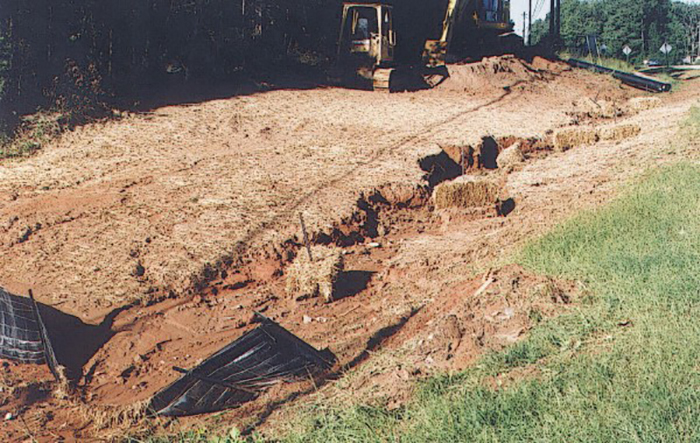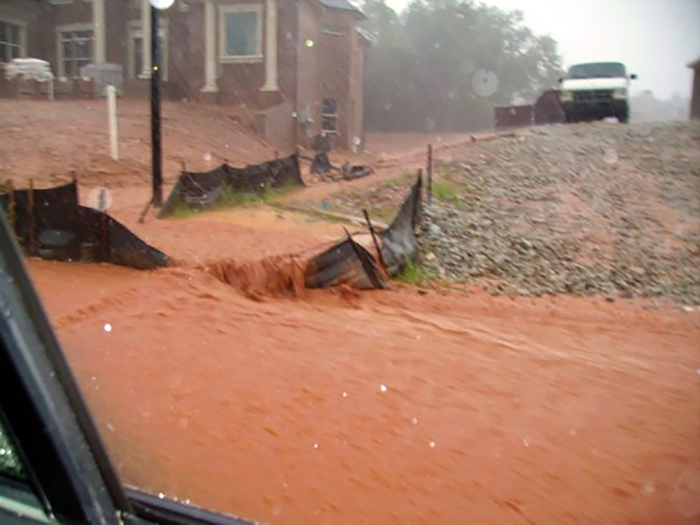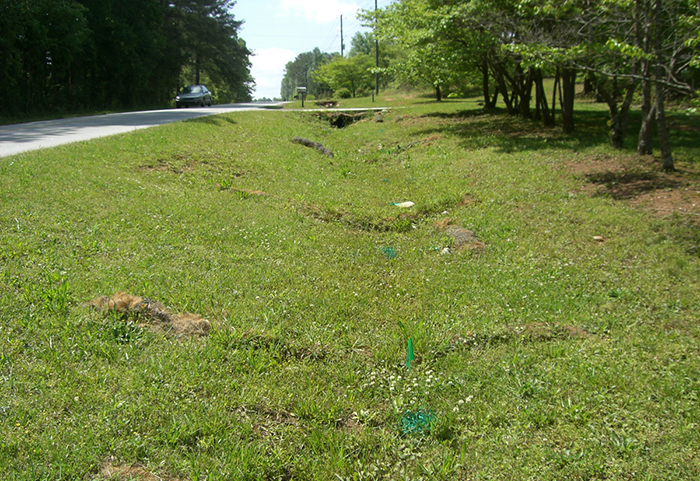Sediment pollution
Even with the current strict erosion and sediment control regulations, sediment is still the main source of water pollution. Some of the main contributors to current sediment pollution are the poor restoration techniques utilized in storm water discharge channels/ditches in many construction sites.

Poor channel restoration
Effective slope stabilization techniques are utilized in many construction sites installing suitable erosion control blankets on slopes. Most of these slopes are not exposed to concentrated storm water flow conditions like the storm water discharge channels/ditches. Sadly, less emphasis is placed on the restoration of these channels in construction sites. Most of these channel restorations involve only several check dams (hay bales or silt fences) without any channel liner. With the current weather conditions, all these methods are failing, and our water resources are threatened and polluted with sediment every day.

Stop sediment pollution
Establishing sustainable mature vegetation is the best long-term solution for channel restoration. Since construction sites have water diversion channels with bare land (i.e., without vegetation), high-strength erosion control blankets are needed to provide protection until sustainable mature vegetation can be established. During rainfall, these channels are faced with an extremely high rate of runoff water flow. Thus, intermittent shallow check dams are needed to break the runoff water flow rate. Using tall check dams in these channels can create additional threats during heavy storms. Concentrated heavy water flow can be blocked by tall check dams causing water to find alternative routes, which leads to more erosion and sediment pollution. Natural and biodegradable (GeoNaturalTM) products are the solution to restore these storm water discharge channels and to reduce sediment pollution of nearby water sources.
These storm water discharge channels/ditches can easily and effectively be restored using BioD-Mat 70 or BioD-Mat 90 woven bristle coir mats as channel liners and shallow BioD-Watl coir wattles as check dams. BioD-Mat woven coir blankets provide protection from rain water and support vegetation establishment. The 100% biodegradable coir wattles effectively filter the sediment. Once the vegetation is established, coir wattles biodegrade and become mulch which improve soil conditions. Proper restoration of storm water discharge channels with woven coir blankets and shallow coir wattle check dams leads to easy-to-maintain, aesthetically pleasing vegetated waterways and reduce sediment pollution.


